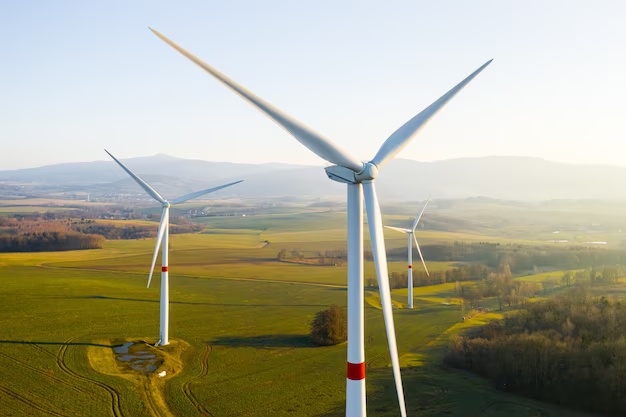The increasing need for renewable energy has made wind power an essential component of the transition to a more sustainable future. On the other hand, there has been disagreement on worries over how wind turbines may affect bird populations. The amount of power generated by wind power has increased significantly during the last 20 years.
Wind energy has emerged as a potential in lessening our dependency on natural gas as winter's hold deepens and discussions about energy supply heat up. Manitoulin Island wind turbines, with their towering presence across Canada's landscape, serve as formidable symbols of renewable energy.
These modern marvels harness the power of the wind to generate electricity, operating on a relatively simple principle. As the wind blows, it causes the turbine's blades to spin, converting kinetic energy into mechanical power. This mechanical power is then converted into electrical energy through a generator, ready to be transmitted to homes, businesses, and industries across the country.
One of the significant benefits of wind power in Canada is its contribution to natural gas savings. Wind power is a clean energy form, a renewable energy source that lessens the need for fossil fuels to generate electricity and reduces global warming. Including wind power in the energy mix effectively helps to preserve natural gas, a key resource in areas like Alberta and Ontario, where it is frequently utilised to produce electricity.
By diversifying the energy portfolio with wind power, Canada can reduce greenhouse gas emissions and mitigate environmental impact while ensuring energy security and resilience. Despite Canada's reputation for harsh winters and heavy snowfall, wind power remains a reliable and effective energy source. The ability of wind turbines to withstand a range of weather conditions, including subfreezing temperatures and snowy terrain, is indicative of their robust design and engineering.
Wind farms in regions like Quebec, Manitoba, and Nova Scotia continue to operate efficiently throughout the winter months, leveraging strong winds to generate power even in adverse weather conditions. Moreover, advancements in turbine technology and maintenance practices have further enhanced the resilience of wind power in winter climates.
Cold-weather adaptations, such as heating systems and anti-icing solutions, help prevent ice buildup on turbine blades and ensure uninterrupted operation during freezing conditions. Additionally, the flexibility of wind farms, with their ability to adjust blade angles and optimise performance in response to changing weather patterns, maximises energy output even amidst snowstorms and blustery winds.
Wind turbines offer homeowners a pathway to reduce dependency on the traditional power grid, fostering energy independence and resilience. By generating electricity on-site through wind power, households can supplement or even entirely replace their reliance on grid-supplied electricity. This self-sufficiency not only reduces utility bills but also provides a hedge against fluctuating electricity prices and potential grid outages.
Homeowners can store excess energy generated by wind turbines in batteries or feed it back into the grid through net metering programs, further optimising energy usage and potentially earning credits or compensation for surplus electricity. Additionally, off-grid systems powered by wind turbines offer remote properties and rural communities a viable alternative to traditional grid connections, empowering them to access reliable electricity in areas where grid infrastructure may be limited or costly to install.
Furthermore, utilising wind power for residential energy needs can yield significant tax benefits and incentives for homeowners. Governments at both the federal and state levels often offer tax credits, rebates, or grants to encourage investment in renewable energy technologies like wind turbines.
For example, homeowners in Canada may be eligible for the Federal Renewable Electricity Production Tax Credit, which offers financial incentives for producing renewable energy using qualifying technology such as wind turbines. Additionally, provinces like Ontario and British Columbia provide various stimuli, such as feed-in tariffs and net metering programs, to support renewable energy adoption and reduce carbon emissions. These tax benefits not only make wind power more financially accessible for homeowners but also contribute to national and provincial goals of transitioning towards a cleaner, more sustainable energy future.
Furthermore, wind power complements other renewable energy sources, such as hydroelectricity, in Canada's energy landscape. During periods of low wind activity, hydroelectric dams can supplement electricity generation, providing a reliable backup to meet demand. This synergy between renewable energy technologies strengthens Canada's energy resilience and sustainability, paving the way for a greener future in the face of climate change challenges.
Wind power proves to be a reliable partner in Canada's pursuit of sustainable energy solutions, especially in the face of harsh winter conditions. Its importance in lowering greenhouse gas emissions and fostering energy security is highlighted by its capacity to harness the power of the wind, as well as technological breakthroughs and collaborations with other renewable energy sources. Wind turbines will surely be essential to propelling Canada forward as it continues its shift to a low-carbon future.


No comments yet